New Vrindaban Hosts Palace Rose Garden Workshop Apr. 11, 2015
Everyone is invited!
Palace Rose Garden Pruning Workshop
Saturday, April 11, 2015 at 10:00 am
Paul Zimmerman, an expert rosarian who is helping the Palace Rose Garden become organic, will be leading a pruning workshop in the Palace Rose Garden. You can check out his website. He is traveling up from South Carolina and will be here at New Vrindaban through Monday April 13.
We will be planting approx 150 bare rooted rose bushes throughout the community on Sunday and Monday and welcome all who would like to help. We have even purchased seven new shovels for the occasion. He is extremely knowledgeable and a lot of fun to be around.
Please come for the pruning workshop on Saturday, and/or if you can help with planting Sunday and Monday…that would be wonderful!
See Her Grace Gopalasyapriya dasi for details 304 843 9808
New Vrindaban Members Appreciate Each Other in Moving Ceremony

Former Garden Manager Kacey Orr with a poster of her in action in the New Vrindaban Community gardens.
By Madhava Smullen
March 15th saw the second installment of a new tradition for New Vrindaban – holding “service appreciation ceremonies” in honor of devotees who have contributed their valuable time and effort in the development of the community.
During the first, at the ISKCON New Vrindaban and Eco-Vrindaban Board Meetings in November last year, long-time residents Madhava Gosh Dasa and his wife Vidya Dasi were honored for their more than forty years of service to the cows and gardens.
At the conclusion of this year’s spring Board Meetings, seven more devotees received attractive cherrywood plaques thanking them for their valued service.
Beginning the ceremony, ECO-V Board Chairman Bhima Dasa honored outgoing garden manager Kacey Orr for her exceptional work towards the development of local food production.
Several devotees then expressed how Kacey, an experienced local farmer, had brought the community gardens through a difficult transitional phase, and in just one year attracted many volunteers, produced large quantities of vegetables used in the Deity, devotee and restaurant kitchens, and laid the groundwork to make moving forward easier.
Kacey is now going on to work with an organization that provides organic food to low income families; but she has clearly left her mark on New Vrindaban, judging by the outpouring of affection and gratitude from residents.
“Everyone who worked closely with Kacey was infected by her incredible enthusiasm – she can make anyone smile, and you could feel that her soul was really in her service,” said President Jaya Krishna Dasa. “We will keep you in our hearts, Kacey, and I hope we cross paths again.”
Next the newest Board Member of ISKCON New Vrindaban, Ananga Manjari Dasi, presented a plaque to Jamuna Dasi, who has been on the board for twenty years since 1995 and a community member since 1980.
Everyone then shared their appreciation of Jamuna, especially her kindness, gentleness, approachability and wisdom. Board members like Anuttama Dasa were particularly grateful for her balancing the sometimes “over-abundance of testosterone” in the boardroom with her well-thought out perspectives that always put people at the forefront.
Gopalasyapriya Dasi then gave a personal example of how caring Jamuna was. Telling a story about how Jamuna had looked after her in just the way she needed when she was overstressed in her service, Gopa moved herself and many others in the room to tears. “I’m just so thankful to know her,” she said.
Incoming ECO-V Board Chair Bhima Dasa then led the group in honoring his predecessor Navin Shyam Dasa and his wife Krishna-Priya Dasi, who were unable to be there that day.
Now a U.S. attorney living in Dallas, Texas with Krishna-Priya and their two children, Navin helped the organization GEETA when it began the process of becoming ECO-V in 2010. He also helped set up the legal mechanisms by which the ECO-V board now runs, and served as its chair from 2012 to January 2015.
Appreciating Navin, devotees spoke about how he was always the calm and meticulous voice during turbulent times, making sure everything was done right and keeping everyone on course.
They pointed out how he also applied his sharp legal mind to thoroughly studying all Srila Prabhupada’s instructions on cow protection, and working to make sure New Vrindaban’s cow care would be sustainable into the future. And all this while caring for a young family, going through law school at Temple University full time, and graduating as valedictorian in his class!
Next, current co-GBC Anuttama Dasa thanked Malati Dasi — who was in hospital with pneumonia – for her work as co-GBC for 15 years. He noted her “unbelievable energy and enthusiasm,” her pivotal role in developing and managing Festival of Inspiration for 13 years, her global contribution as the first Vaishnavi on the GBC body, and her role on the Prabhupada’s Palace Restoration Committee.
“She has also helped the New Vrindaban community tremendously by being a great source for what Prabhupada would do or say in any given situation,” he said, while others expressed gratitude for her association and her constant stream of rare Srila Prabhupada anecdotes.
Some also spoke of her big heart. There was strong emotion in Thakura Dasa’s voice as he recounted how he had been “on the fringe” for 20 years, and no one was more important in bringing him back than Malati. “She’s one of the greatest gifts in my devotional life in a very, very long time,” he said.
Community and board members alike are praying for Malati’s health, and hope that she will continue to play an important role, giving her guidance and sharing her energy.
Finally, Chaitanya Mangala Dasa, a joint board member who grew up in New Vrindaban, presented Kripamaya Dasa and Krsna Bhava Dasi with a special lifetime appreciation plaque for their nearly forty years of service in the community.
Telling the story of their life of service with an accompanying slideshow, Chaitanya Mangala recounted how they both joined ISKCON in 1971, and were initiated by Srila Prabhupada in 1972. They were then married in 1974 in Buffalo, New York.
After doing various services such as book distribution and fundraising, they moved to New Vrindaban in 1979 with their two children Krishna Balarama and Krishnapriya.
In the 1980s, they took care of life membership, raised their children and put on some of ISKCON’s best plays with the Brijbasi Players. In the 1990s, they managed the Palace Lodge, coordinated festivals, and ran bhakta programs.
In the 2000s, Kripamaya and Krsna Bhava worked with the cow protection and congregational departments.
Today, Kripamaya is a charter member of the board of ECO-V, which he helped start in 1998. His music classes and his wife’s art classes are treasured by children attending the Gopal’s Garden School. And together, they run the gift shop at Srila Prabhupada’s Palace, where they have also organized regular sangas in Prabhupada’s gorgeous temple room for the past two years. These sangas have brought New Vrindaban residents together to share memories and appreciations before Prabhupada’s murti, inspiring them and revitalizing relationships.
As the slideshow ended, a cavalcade of love and appreciation for the two burst forth from community members. Some devotees spoke about Krsna Bhava’s positivity, her dedication to chanting sixteen rounds a day, her excellent listening skills and her first-class cooking of bharatas, halava and malpuras for Sri-Sri Radha-Vrindabanchandra’s Tuesday morning offering.
Others talked of Kripamaya’s scholarship, the way he lights up while singing kirtan, his ambition in going back to college in his fifties to study music, and his Ramayana opera.
“They’re both really strict, dedicated devotees, and a fantastic example of the ideal,” said Jamuna, while Sankirtan Dasa called them “wonderful surrendered souls.”
In response, Krsna Bhava said, “We’re feeling very grateful for our experiences in New Vrindaban – there have been both hard times and good times to learn from. It’s always been a blessing to live close to the temple and Krishna and so many wonderful devotees.”
Kripamaya added, “We ask for the blessings of all the assembled Vaishnavas that we have many more years to serve here at New Vrindaban.”
In closing, Chaitanya Mangala, who introduced the idea of the service appreciation ceremony, recited the translation of Verse 4 from Rupa Goswami’s Nectar of Instruction, his favorite book, which discusses the six “symptoms of love shared by one devotee and another.”
He then quoted the purport, where Srila Prabhupada writes: “Even in ordinary social activities, these six types of dealings between two loving friends are absolutely necessary,” and further clarifies, “The International Society for Krishna Consciousness has been established to facilitate these six kinds of loving exchanges between devotees.”
“I hope it’s something we can all take to heart,” Chaitanya Mangala concluded.
And from the moving and heartwarming evening full of laughter and tears – from a community of devotees who have been through so much but continue to hold such deep love and appreciation for each other – it’s clear that many in New Vrindaban are ready to do just that.
New Vrindaban and the Bhagavat Dharma Experience: Srila Prabhupada’s 1972 Visit
The Bhagavat Dharma Experience:
Prabhupada’s Second Visit to New Vrindaban
Written by Madhava Smullen. Archival Research by Chaitanya Mangala.
New Vrindaban, August 31st, 1972 – Just as he had three years prior in 1969, Srila Prabhupada arrived at New Vrindaban in a black Lincoln Continental, winding down the country road towards the excited group of waiting devotees.
But this time, the group was much larger, belting out a joyous kirtan, and standing in front of a new converted farmhouse temple. During Prabhupada’s last visit, there had only been the original Vrindaban farm and a few dozen close followers. Now, New Vrindaban had expanded to several farms including this main one, Bahulaban, presided over by Sri-Sri Radha-Vrindabanchandra.
As Srila Prabhupada stepped out of his car, the devotees hit the ground in exhuberant prostration. They pressed around him as he walked in his regal manner across the lawn and sat on a red-velvet vyasasana strewn with garlands and surrounded by a forest of Tulasi plants.
Thanking the devotees for all the hard work they had done to organize the upcoming festival, Prabhupada introduced the concept of the Bhagavat Dharma Discourses he was to hold at New Vrindaban. The event, where he would speak for over a week on the Bhagavatam, was to be one in a series that was already attracting thousands in cities throughout India.
“Just try to hear about Krishna,” he said. “Your life will be successful…. This is called bhagavat-dharma.”
After his talk, Prabhupada rode to an old farmhouse at Madhuban two miles away, where he would stay during his visit. He was clearly pleased to be back at New Vrindaban. “This Vrindaban, that Vrindavan, no difference,” he said.
The festival began the next morning. Over 500 devotees, guests and reporters had flooded in from all over the US for the biggest public event ISKCON had seen so far.
They all had to brave the austere weather and conditions of West Virginia mountain country. With no guesthouse, vans and tents dotted the hillside. During the festival heavy rain fell, chilling campers to the bone and turning Bahulaban into a sea of mud. In the mornings, devotees found their way through the dark to “the Ghat,” a cold, muddy pool next to the cowshed to bathe. Drinking water was hauled from a well. And cooking was done outside on makeshift stoves.
But devotees faced the hardships with good humor and comraderie, nicknaming Bahulaban “Mudsville” after the local town of Moundsville, and enjoying working with godbrothers and godsisters from all over the country. They were prepared to encounter any austerity for Prabhupada’s association. And Prabhupada himself didn’t mind the lack of facilities (his quarters had no running water). He was just happy to absorb the simple mood of New Vrindaban.
At 7:00am on September 1st – Janmastami Day – he walked the dirt road up “Govardhana Hill” with his entourage to give his first Discourse. The hill overlooked Bahulaban and provided views of densely wooded mountains fading off into the mists at every turn. At the top was the large open-air pavilion devotees had built themselves to accommodate all the visitors.
As a crowd of devotees and guests greeted him with loud kirtan, Prabhupada ascended a stage that stretched across one entire end of the pavilion and sat on his vyasasana. To his right, against a dramatic red backdrop, was a lifesize painting of Chaitanya Mahaprabhu. To his left were Deities of Sri Sri Radha Damodara and Lord Jagannath. Flags and streamers hung everywhere.
Prabhupada spoke powerfully about the purifying nature of Krishna conscious sound vibration, the always blissful nature of God, or Bhagavan, and our relationship to Him – Bhagavat-Dharma.
Later, he inaugurated the beautiful new marble-floored temple room at Bahulaban, and presided over a large initiation ceremony at which many candidates from across the country received new names.
In the evening, after arati, came an experience many would still remember decades later. As devotees packed tightly into the temple room, Prabhupada had some of the sannyasis read aloud from Krishna book. After the entire introduction and first chapter on Lord Krishna’s advent, they thought it might be time to stop. But Prabhupada indicated that they should continue.
As they read on for hours, the exhausted devotees, famished from fasting all day and crammed into the sauna-like temple room, struggled to stay attentive to the weighty philosophy of “Prayers by the Demigods for Lord Krishna in the Womb.” Gradually, everyone began nodding off. A comical scene ensued as the dandas of sleepy sannyasis fell, crossing like swords across the aisle and then bobbing up as their owners jerked themselves awake.
Only Srila Prabhupada listened attentively, relishing Krishna’s pastimes. At last, well after midnight, he smiled. “I think you have had enough. Take prasadam. You are a little tired.”
Despite their exhaustion, after arati and the feast at 1:00am, many devotees stayed up through the night to chant their rounds and make sure they didn’t miss mangala arati the next day. For it was a most auspicious event — Srila Prabhupada’s seventy-sixth appearance day.
The next morning was beautiful and sunny as Prabhupada emerged from his car in front of the pavilion in his saffron robes and fresh, perfectly applied tilak. A sense of purity emanated from him, an otherworldly quality that stood out against the old car, as if he were from another age.
“When Prabhupada looked out of the Volkswagen, which was being driven by Hayagriva, he smiled like I’ve never seen him smile — except in that picture in the Lilamrita when Brij stood up for the first time and he was just beaming,” recalls Varshana Swami. “As Sally Agarwal described it, that oceanic smile.”
Showers of flowers rained on Prabhupada as he entered the pavilion. Devotees chanted his pranam mantra at the tops of their lungs and hit the ground before him. Some smiled fondly at him; some seemed awestruck. All adored him. But Prabhupada didn’t play to the crowd as he made his way through it. He simply walked quietly to the stage, folded his palms before the Deites, and offered his obesiances to Them.
As he ascended his vyasasana to address the packed audience of devotees, guests, scholars, local politicians and reporters, he expressed that he didn’t want them to think he was receving all this adoration for himself. “It may be misunderstood,” he said. “An outsider may see that “Why a person is being worshipped like God?’ There may be some doubt.”
The name “Vyasa Puja,” he explained, comes from Vyasadeva, the incarnation of Lord Narayan and original author of all Vedic literature. Because the spiritual master passes this knowledge originating from the Lord through disciplic succession without change, he is offered respect once a year on his birthday.
Prabhupada emphasized that just as the viceroy of the king may accept valuable jewels and gifts on behalf of the king, similarly the spiritual master “receives all honor… on behalf of the Supreme Personality of Godhead, not for his person.”
After Prabhupada’s talk, devotees ascended the stage one by one to offer flowers and obeisances and read out literary offerings. With such a crowd, not many got the chance – Silavati Dasi, an authority on Deity worship, was notably the only woman to make an individual offering, personally invited by Srila Prabhupada.
Bharadraja Das then began the Gurvastakam prayers. Hundreds rose to chant and dance, as Prabhupada looked on from his vyasasana and played kartalas.
As the kirtan began to get more lively, Vishnujana Swami took over the lead, playing mridanga right in front of Prabhupada. He sang with feeling, building the kirtan in intensity. In response, Prabhupada closed his eyes and began first to rock his head from side to side, then his whole body, his eyes tightly closed as he crashed his kartals together with more and more force.
Vishnujana’s kirtan reached a crescendo, and at last, as Radhanath Swami recalls, “It appeared that Prabhupada could not contain himself.” Overwhelmed with love for Krishna and the devotees, he took over the lead, calling out the Lord’s names in a strong voice.
The crowd went mad. Devotees rushed the stage, and a thousand arms reached out towards Prabhupada. Srila Prabhupada began to cry, chanting through his tears. The devotees were swept up in his rare exhibition of spiritual emotion. A wave of love of Godhead hit them and they cried openly too, crushing the stage with total abandon and roaring out the Holy Names.
“Srila Prabhupada’s chanting was so beautiful, it was almost like the sky opened up, love of God came down and it poured over all of us,” recalls Satyanarayan Das. “I’ve never been to a kirtan like that before in my life and never since… It was a divine experience.”
After the kirtan, as everyone sat stunned, a group of devotees staggered up the hill carrying an enormous birthday cake baked by Gayatri Dasi. Srila Prabhupada took a tiny morsel and nodded his approval, then left to go back to his quarters at Madhuban. The devotees, wide-eyed, looked at each other. It was maha-prasada!
In one surging mass, everyone dove at the cake, all wanting a piece of Prabhupada’s mercy. Some playfully attacked each other for a piece. Others rolled the cake through the crowd as devotees grabbed huge handfuls and stuffed it into their mouths. Some, in bliss, ran down the hill offering cake to astonished guests. “Here, this is Prabhupada’s cake!”
“The cake was completely demolished, within minutes, in a frenzy,” Gokularanjana Das recalls. “In retrospect, it was offensive, but at the time it was like spontaneous devotion.”
Later that evening, Vishnujana performed several selections from the Radha-Damodara Traveling Sankirtan Party’s Transcendental Rock Opera, then launched into another ecstatic kirtan. As darkness fell, the local devotees built a bonfire, and everyone sat around it, watching the flickering flames as they took turns reading about Lord Chaitanya’s pastimes.
The Bhagavat Dharma discourses continued for another week, with Srila Prabhupada carried royally by palanquin to the pavilion and back to the temple every evening, surrounded by an ocean of devotees carrying torches, lanterns, and flashlights and chanting uproariously.
“In each successive Discourse, Prabhupada took the devotees deeper and deeper into the meaning of Srimad-Bhagavatam,” recalls Suhotra Swami. “It was a perfect outline… Every devotee should study these lectures to study the logic of the Bhagavat philosophy, to see how every element of the philosophy is fundamentally connected to all other elements.”
Meanwhile, Prabhupada wrote to his disciples elsewhere in the world expressing his appreciation of the festival. “The Bhagavata Dharma discourses here in New Vrindaban are going on very nicely, and daily several hundred devotees and guests are coming to hear, and it is truly a wonderful time,” he wrote to Radha Damodar Das. And to Brahmananda, he wrote, “Now go on holding [these] Bhagavata Dharma discourses in every city of the world.”
At last, on September 10th, the festival came to an end, and on September 11th, Srila Prabhupada departed, leaving the New Vrindaban devotees feeling satisfied and energized.
“[At the festival we had] the feeling that we were a family and there was Srila Prabhupada, he was our father,” recalls Krishna Kumari Dasi. “We all felt sheltered, we all felt protected. It was like a resurgence of energy and rededication. We all went back to our temples completely refreshed and rejuvenated and ready for whatever austerities we had to perform.”
Celebrate Rama Navami in New Vrindaban Sat. Mar. 28 2015
Come Celebrate with Us!
We would like to invite you and your family to celebrate Lord Ramacandra’s Appearance Day with us on Sat. March 28, 2015.
You will have the opportunity to:
Hear Rama-Katha
Bathe Their Lordships
Join in an ecstatic kirtan
Honor a sumptuous prasadam feast
Offer a special pair of paduka to the Lord
The Schedule is below.
Festival Schedule
12:30pm: Arati
1:00pm: Bhagavad-Gita Class
4:00pm: Storytelling by Sankirtan Prabhu
5:00pm: Shanti Havan for Kalash Donors
6:00pm: Go-Puja
7:00pm: Arati
7:30pm: Rama-Katha
8:00pm: Paduka Arpanam & Kalash Abhishek
9:00pm: Dinner for Kalash Donors
9:30pm: Sri Rama Parivar Jhulan Yatra
Sivarama Swami Features New Vrindaban In His Book Intro
Below is an excerpt from the introduction to “Nava Vraja Mahima,” the nine volume series is “an epic work of over 4,000 pages on The Glories of New Vraja Dhama,” written by His Holiness Sivarama Swami.
——————————–
Among Srila Prabhupada’s many innovations is the concept of “farming communities,” of which the first was New Vrindaban. The instructions that Srila Prabhupada gave the leaders of New Vrindaban were extrapolated from two of the seven “purposes” included in ISKCON’s original articles of incorporation: “To erect for the members and for society at large a holy place of transcendental pastimes dedicated to the Personality of Krsna” and “To bring the members closer together for the purpose of teaching a simpler and more natural way of life.”
Srila Prabhupada envisioned that these purposes could be realized in New Vrindaban if the devotees there concentrated their efforts on cow protection, sustainable agriculture, simple village life, and higher learning. It was also essential, he instructed, that they make New Vrindaban into a place of pilgrimage and an environment in which anyone could learn to love Krsna. Though perhaps never presented as such, these principles can be seen as New Vrindaban’s founding principles.
Srila Prabhupada saw that the expansive area of New Vrindaban provided an opportunity not only for his followers to live as Krsna did, but also to remap Krsna’s land on the natural topography of the Appalachian Hills. As was the case in Visnupura, Srila Prabhupada had the natural features of New Vrindaban identified with those of Vraja – the hills would become Govardhana, the lakes Radha-kunda and Syama-kunda – indeed, Prabhupada wanted New Vrindaban to be a “replica of Old Vrindavana.” In his transcendental ambition to glorify Krsna, Srila Prabhupada also envisioned that seven hills of New Vrindaban should each feature a separate temple with its own Radha-Krsna Deities to commemorate the seven main Deities of Bhauma Vrindavana. In short, Srila Prabhupada envisaged that his American followers “should have a place like Vrindavana.”
While encouraging the development of New Vrindaban, Srila Prabhupada was also constructing a temple in Bhauma Vrindavana. ISKCON’s history testifies to the great pains Srila Prabhupada endured to establish the Krsna-Balarama temple in Vrindavana. It would be a place where his disciples could visit the original land of Krsna and where their children could study in Gurukula and naturally become Krsna conscious.
And while pouring energy and resources into ISKCON Vrindavana, Srila Prabhupada knew that it would not be possible for all of his followers to visit, what to speak of reside there. Thus he continued to encourage the global development of farming communities based on the template of New Vrindaban – holy dhamas in the Western world. Devotees could be successful in their efforts to establish these Western dhamas provided that they followed Prabhupada’s instructions. The potency to invoke the dhama was with Srila Prabhupada, and those who sincerely followed His Divine Grace could be empowered instruments in his will.
While other farming communities were established during Srila Prabhupada’s time, His Divine Grace did not directly instruct that they “replicate” Vraja, as he had done in the case of New Vrindaban. Instead he emphasized self-sufficiency and communal living based on the principles of varnasrama-dharma. In all cases, however, he installed Deities at the center of the community, and by his disciples’ adhering to the activities of pure devotional service, those farming communities also became holy places.
CLICK HERE for more info about Sivarama Swami’s books.
Board Members Host Lively Community Dialog In New Vrindaban
Community Dialog on the topic of a possible “Village Council” at the onsite Joint Board Meetings in New Vrindaban
by Lilasuka dasi
The weekend of March 14 and 15, 2015 was a jam-packed, exciting and informative two days for New Vrindaban (NV). There used to be two weekends a year when the two Boards of Directors, namely ISKCON New Vrindaban (INV) & ECO-Vrindaban would get together with their managers and staff so all involved could connect and communicate. Starting two years ago, however, the joint board members decided to expand these weekend gatherings and open them up for all New Vrindaban residents and well-wishers to participate as well.
During the weekend of March 14 and 15, the activities were divided into four sections:
- morning: Dept. Heads presented their yearly reports- accomplishments and goals.
- afternoon the Community Dialog sessions were held – formal opportunities for board and community members to interact and share concerns with each other, the goal being to improve overall relationships. This year a Village Council idea was introduced.
- Sunday morning, everyone was invited to go on a tour of the spots around New Vrindaban that are being improved and/or renovated, such as the Deity kitchen at the RVC temple, and the ox barn at Bahulaban, and more.
- Sunday after the feast there were service appreciations given for some devotees who have been serving New Vrindaban for some time in different capacities but have recently stopped these services.
And, in between, on Sat. evening there was a relaxed, yet informative event at Prabhupada’s Palace. Sankirtan prabhu gave his dramatic, visual powerpoint presentation called “How the Hare Krsna Mantra Came to the West”.
The account in this article is a glimpse into Saturday afternoon’s discussion, just one of the weekend’s events, to inform anyone who missed it. There will soon be a series of detailed articles written by Madhava Smullen who also participated in the weekend activities.
Of particular interest to the residents of New Vrindaban was a lively community dialog,, after lunch on Saturday March 14, 2015, which was well attended by many community members. Chaitanya Mangala introduced the topic of a possible Village Council for New Vrindaban, which is just in the idea stage with no details worked out yet. The proposed Council could ideally consist of a body of local devotees working together, where all residents could feel that they have an increased voice in their community of New Vrindaban.
Chaits mentioned how previously leaders of New Vrindaban had made valiant efforts to manage a community through a non-profit religious corporate structure, but this doesn’t work because the required legal structures have restrictions that can’t be transformed into a broader democratic system. Therefore, we need to approach this from a broader perspective.
Chaits emphasized three buzz words for such a Village Council: small, local and simple.
“Small: Let’s just have a few people on the Council, at least to begin with. Later it can expand as needed.”
“Local: The members should be available to regularly meet face to face, for optimum effectiveness and communication.”
“Simple: Let’s create as few pre-conditions as possible, so as not to restrict the group from starting. They can develop the rules they will operate under as they move forward.”
“Go on acquiring the surrounding lands and in this way we will establish a local self-governing village and show all the world a practical example of spiritual life as Krishna Himself exhibited in Vrindaban.”
Here is a link:
Then the discussion was opened up. Devotees were expressing themselves very respectfully, but frankly as well. Many remarked afterwards that this was a mature discussion coming out of people’s honest desires to have a “village voice”. That is, the residents of New Vrindaban want a voice in how the community is run, so they spoke up frankly, but also showed much appreciation for the current leaders and managers and all the challenges they’ve faced.
The apathy in NV over the years was mentioned as one of the many challenges. This apathy has different sources. There is much skepticism that things will change, yet others still have hope. Some devotees have complained that, in their opinion, New Vrindaban is being run as more of a corporation than a spiritual institution. Some asked what kind of influence would a Village Council really have on the decision-making process in New Vrindaban. The NV Advocacy Sanga has been discussing many of these issues for the last year and a half.
One devotee appreciated that this year has been identified by Jaya Krsna prabhu as the year of “deepening relationships”. Just as we have to continuously deal with the structure of the roads and buildings of NV, dealing with ongoing devotee relationships is also essential.
A suggestion came up for us to possibly study how a few successful intentional communities run and what their successes are based on. Mukunda das said, “Those communities, although they may not be based on spirituality, have many of the “0’s” in the equation, but we have the “1” (Krsna) to make it perfect. So we can still learn from them.”
An old friend and well-wisher of the Hare Krsna movement, Burke Rochford, a professor of sociology, was present at the meetings. He expressed that he sees these types of dialogs as very important. He said that since Srila Prabhupada had set up New Vrindaban as a community, as opposed to a city temple, that we have had to face certain special challenges. He has also come to understand that the voices of the residents need to help shape the direction of New Vrindaban.
There was a short discussion on the topic of the Sunday feast. People were expressing both sides, namely what enlivens and what sometimes discourages the devotees’ attendance.
Although many topics were touched upon, the themes that were recurring throughout the afternoon were the need for the residents’ voices to be heard and the challenge of rebuilding trust. It was suggested that a Village Council could address these types of concerns for a win/win situation.
The NV Advocacy Sanga announced that the Sanga will continue the discussion of a Village Council and try to come up with a solid proposal from their side. They also expressed their wish, along with the joint Board members, that this healthy, open discussion will continue in the community at large.
Jayapataka Swami and Others to Present at Festival of Inspiration’s 15th Anniversary in New Vrindaban
by Madhava Smullen
Since its launch in 2000, Festival of Inspiration has been a unique standout of the festival season. It has just the right mix of enlightening presentations by ISKCON’s best speakers; top-quality entertainment from dramas to stand-up comedy; rip-roaring kirtans; and mouth-watering prasad.
This year, 600 to 700 devotees from all over the USA, Canada and beyond are expected to flood into the emerald hills of New Vrindaban, West Virginia from Thursday May 7th to Sunday the 10th for FOI’s unmissable 15th Anniversary event.
World-renowned kirtan singers Agnideva Das and Karnamrita Dasi will kick off proceedings on Thursday with an evening of ecstatic kirtan and bhajans from 6 to 10pm.
On Friday and Saturday, after a special themed Bhagavatam class by a VIP guest, the presentations will begin. With three on offer at once, devotees will have the chance to pick their favorite from 18 different seminars over the weekend.
Jayapataka Swami, making a rare appearance outside of India and his very first at Festival of Inspiration, is expected to draw quite the crowd for his presentation. He’ll also give one of the weekend’s special extended Bhagavatam classes.
Also presenting for the first time will be Vrindavana pilgrimage guide Deena Bandhu Das, who is expected to take audiences for a dive into Lord Krishna’s nectarean pastimes with his unrivaled storytelling skills.
Other speakers will include walking monk Bhaktimarga Swami; Srila Prabhupada’s personal servant Srutakirti Das; New Vrindaban’s own simple living expert Varshana Swami; and academic scholars Ravindra Svarupa and Radhika Ramana.
Also appearing will be Prabhupada’s early disciple Malati Dasi; respected educators Laxmimoni Dasi and Urmila Dasi; ISKCON Communications Director Anuttama Das, BBT editor Dravida Das; and inspirational university preacher Kalakantha Das.
Topics are expected to range from practical life skills such as public speaking to in-depth looks at the lives of Vaishnava saints, to Srutakirti’s wonderful stories of his time with Srila Prabhupada.
Attendees will also have the option to take part in two special 15th Anniversary treats offered simultaneously alongside the seminars. They’ll be able to join a host of renowned kirtaniyas for bhajans in the covered “yajnashala” on the temple grounds. And they’ll get to spend quality time with visiting Swamis and senior devotees in the question and answer tent.
Parents will be free to attend all of this, with experienced child-carers running an all-day Kid’s Tent where children will be engaged in a variety of fun Krishna conscious activities.
In the evenings, senior devotees and kirtaniyas will lead “Nama-Yajnas” from 7 to 10pm in the temple, delving deeper and more joyfully into the Holy Name.
Meanwhile Sunday morning will see devotees running to the community hall to save their seats for one of FOI’s most popular offerings – two hours of transcendental entertainment including an epic drama by Bhaktimarga Swami, and a collection of side-splitting comedy sketches by professional New York comedian Yadunath Das.
The festival will then conclude with a delicious classic Sunday Feast.
Of course, prasadam throughout the Festival will be top notch, with breakfast, lunch and dinner served every day, a variety of international menus, and healthy options at every meal.
“The prasadam at Festival of Inspiration is legendary,” says organizer Vrindavana Das. “Nothing can compare. We spend most of our budget on prasadam.”
Accommodation is also first class, with the recently renovated Palace Lodge offering fully-furnished onsite motel quality rooms with either double queen or king beds. Guests are advised to register early as onsite accommodation is expected to be booked by the end of March. For overflow guests, rooms will be booked at local hotels within a 15 to 30-minute driving distance.
“Festival of Inspiration is always a consistently enlivening experience,” comments Kalakantha Das, who has brought students from Gainesville’s Krishna House to FOI for years. “It’s uniquely educational in nature — you have a chance to hear from very experienced and educated devotees in interesting fields. Attendees get a good sense of the veracity of Krishna consciousness and the variety of ways that it can be practiced and experienced.”
“It’s a rare opportunity for devotees to come together for the purpose of association,” adds book distributor Vaisesika Das, who attended last year. “And the varied choice of presentations lets everyone fill up their devotional plates and eat to their full satisfaction!”
Register now by calling 304.843.1600 ext. 134 & 129, or visiting http://www.festivalofinspiration.net/registration/
For the schedule and more details, visit http://www.festivalofinspiration.net
ECO-Vrindaban Board Meeting Minutes 02/22/2015
Mission Statement: ECO-Vrindaban promotes Simple Living, Cow Protection, Engaging Oxen, Local Agriculture, and above all, Loving Krishna, as envisioned by Srila Prabhupada, the Founder-Acharya of ISKCON New Vrindaban.
Participating Members of the ECO-V Board of Directors: Bhima, Chaitanya Mangala, Kripamaya, and Ranaka.
Participating Advisors: Jaya Krsna, Radha-Krishna, Sri Tulasi Manjari
Participating Managers: Mukunda
Recording secretary: Jordanna
1. Refining ECO-V Mission Statement
Whereas: The ECO-V board wishes to continue refining its mission statement for clarity and brevity.
Resolved: The board adopts the following as our updated mission statement:
Mission Statement: ECO-Vrindaban promotes Simple Living, Cow Protection, Engaging Oxen, Local Agriculture, and above all, Loving Krishna, as envisioned by Srila Prabhupada, the Founder-Acharya of ISKCON New Vrindaban.
2. ECO-V Posters
Whereas: The ECO-V board wishes to have posters designed related to its mission and “Prabhupada’s Vision for New Vrindaban.”
Resolved: The board authorizes up to $500 for poster designs.
3. Kacey’s Retirement and Replacement Search
Kacey got an opportunity to be a director at a non-profit called Grow Ohio Valley and she resigned from ECO-V in February. The board members are simultaneously sad to see her go and happy to know she found a position where she will still be able to regularly interact with ECO-V because she oversees Grow Ohio Valley’s local food production efforts in Marshall County. There was a general discussion defining Kacey’s contribution to the garden and what sort of person should be considered for the position. The ECO-V team will continue a search till a suitable Garden Manager replacement is found.
4. March Onsite Meeting Preparation
A brief overview of the weekend schedule:
Saturday
Morning: Department Head Presentations
Afternoon: Community Dialogue
Evening: Sanga with Prabhupada at his Palace
Sunday
Morning: Parikram Tour
Afternoon: Temple Program & Service Appreciations
5. Mukunda’s Relocation Plans
Mukunda plans to relocate to New Vrindaban the end of March; he will have a clearer idea of when exactly that will be by the on-site meeting.
ISKCON New Vrindaban (INV) allocated $25K budget toward the renovation of the Prabhupada House (aka the “Green House”). Vyasasana will start the renovations. Once underway he will be able to give a clearer picture of the timeframe required.
6. ECO-V Bahulaban Barn Rehabilitation
This project has been on hold since January due to the weather and will resume once conditions improve.
7. INV Bahulaban Utility Building Roof & Window Repair
The roof was completed in December and some exterior clean-up has been done. The Stone Shop roof has not been done. The Amish workers are offering a good price to finish that section of the roof. The Joint Boards will look at this project during the on-site meeting.
8. INV Palace Renovation Matching Grant
There are three projects currently in the works:
1) Part of the exterior wall
2) The upper stairs
3) Expanded 80-car parking lot.
9. INV “Reduce/Reuse” – Water Filling Stations
The existing stations are being used. The outside filling station still needs to be installed. This should be done by summer in time for the festival season.
10. INV “Reduce/Reuse” – Signs
A sign was placed at the new water filling station near Prabhupada’s Palace. This project has been completed.
11. INV/ECO-V Garden of 7 Gates 3 High Tunnel Greenhouses
These are completed, but still need shelving. David will install them when weather warms up. Vidya will start growing flowers in March.
12. Solar Equipment
Additional panels will be installed on the existing solar electric system to offset the increased electric usage at the Prabhupada House (formerly known as the Green House).
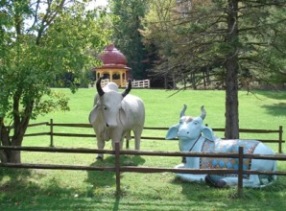
Welcome to Brijabasi Spirit
Thank you for taking the time to visit the New Vrindaban community blog. Think of visiting our blog as making a virtual pilgrimage.
Hare Krishna Hare KrishnaKrishna Krishna Hare Hare
Hare Rama Hare Rama
Rama Rama Hare Hare
"May cows stay in front of me; may cows stay behind me; may cows stay on both sides of me. May I always reside in the midst of cows."
Hari Bhakti-vilas 16.252














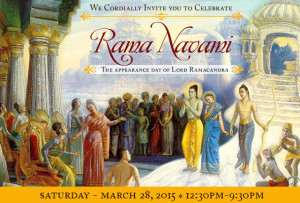
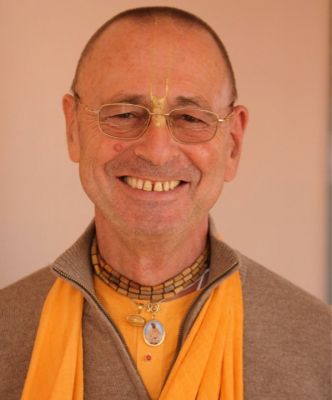

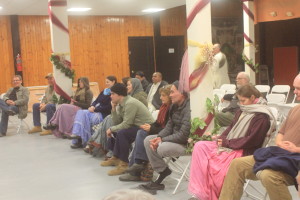
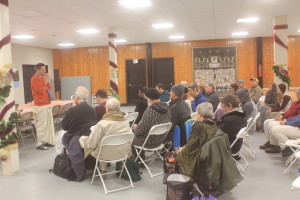
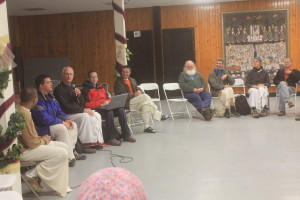
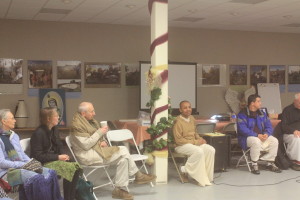

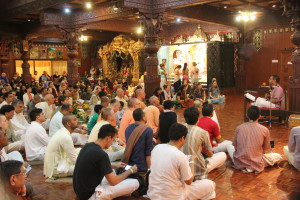
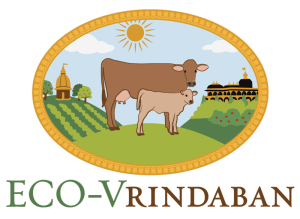
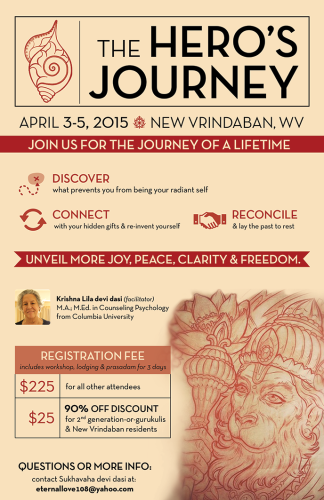




Recent Comments